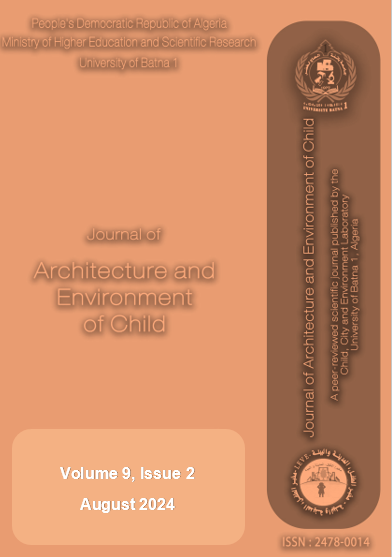Unveiling the Dynamics of Residential Outdoor Playgrounds: Insights into Children's Play Activities
Case Study of the 420 Collective Housing Units Neighborhood in Oum El Bouaghi
Mots-clés :
Children, Playground, Residential Outdoors, Play Activities, AlgeriaRésumé
Playgrounds are widely recognized as vital spaces for children's outdoor play and development. However, in Algeria, urban development policies focused primarily on housing quantity have often neglected the quality of outdoor open spaces, particularly playgrounds. This research explores the hypothesis that claims a divergence between the entities of outdoor playgrounds in residential neighborhoods and the children’s necessities. Therefore, the central research question of this paper investigates the ways children use their daily outdoor playgrounds. To address this multifaceted inquiry, a combined methodological approach was employed. Qualitative method, including direct observation, was employed to understand the structural composition of play spaces and children's interactions within them in nuanced and contextualized ways. Additionally, the quantitative method elaborated a self-administered questionnaire conducted with children to gather some personal insights and perspectives on the local public play spaces. As a result, initial assessments of the neighborhood playgrounds revealed several significant accessibility and usability challenges that restrict their effectiveness as recreational spaces for children. Moroever, the research paper underscores the necessity for urban design approaches that prioritize children's perspectives, ensuring environments that support their growth and well-being. This study advocates for a child-centered approach to urban planning, emphasizing the importance of designing playgrounds that facilitate children's agency, freedom and creativity in their play activities.

